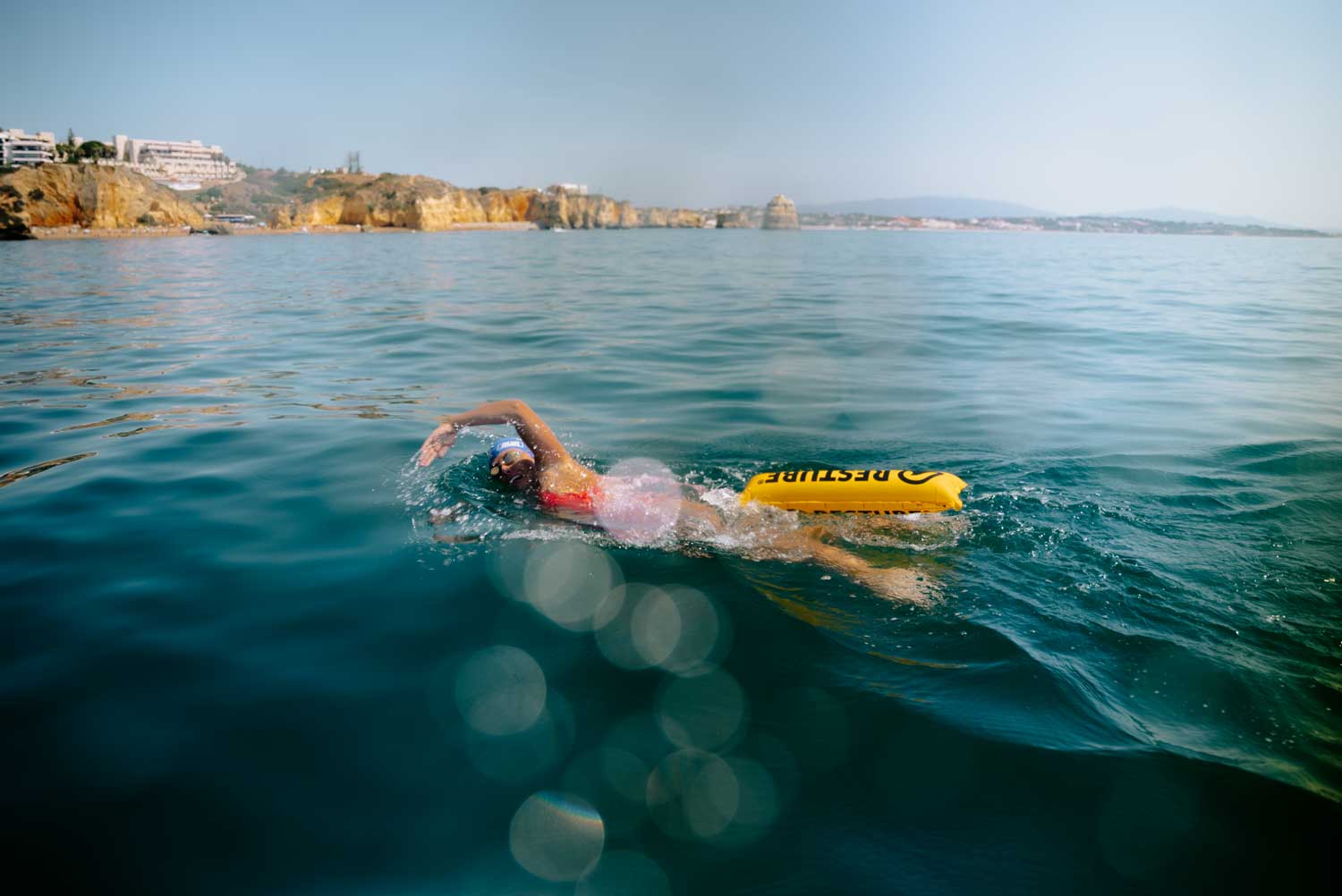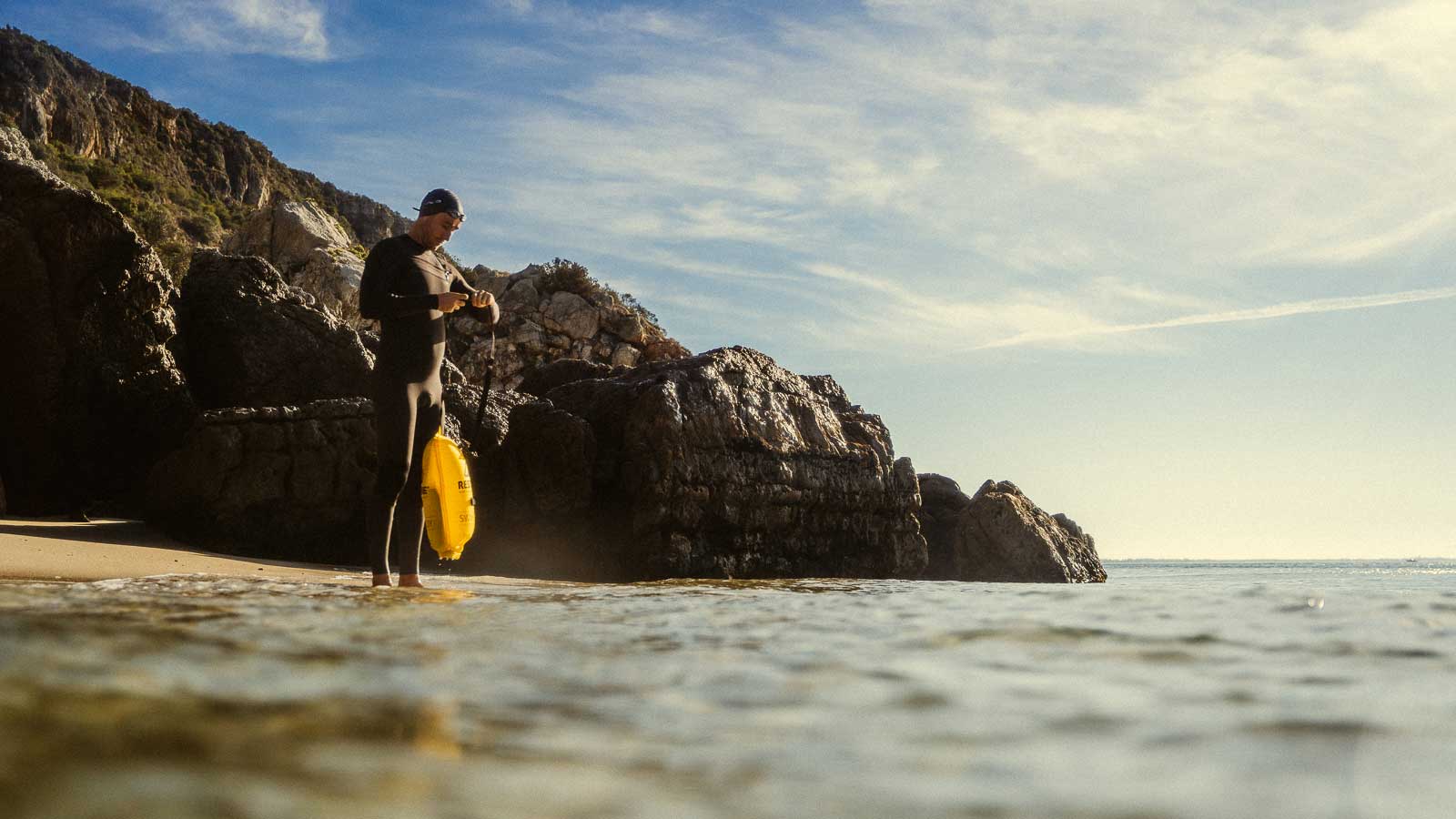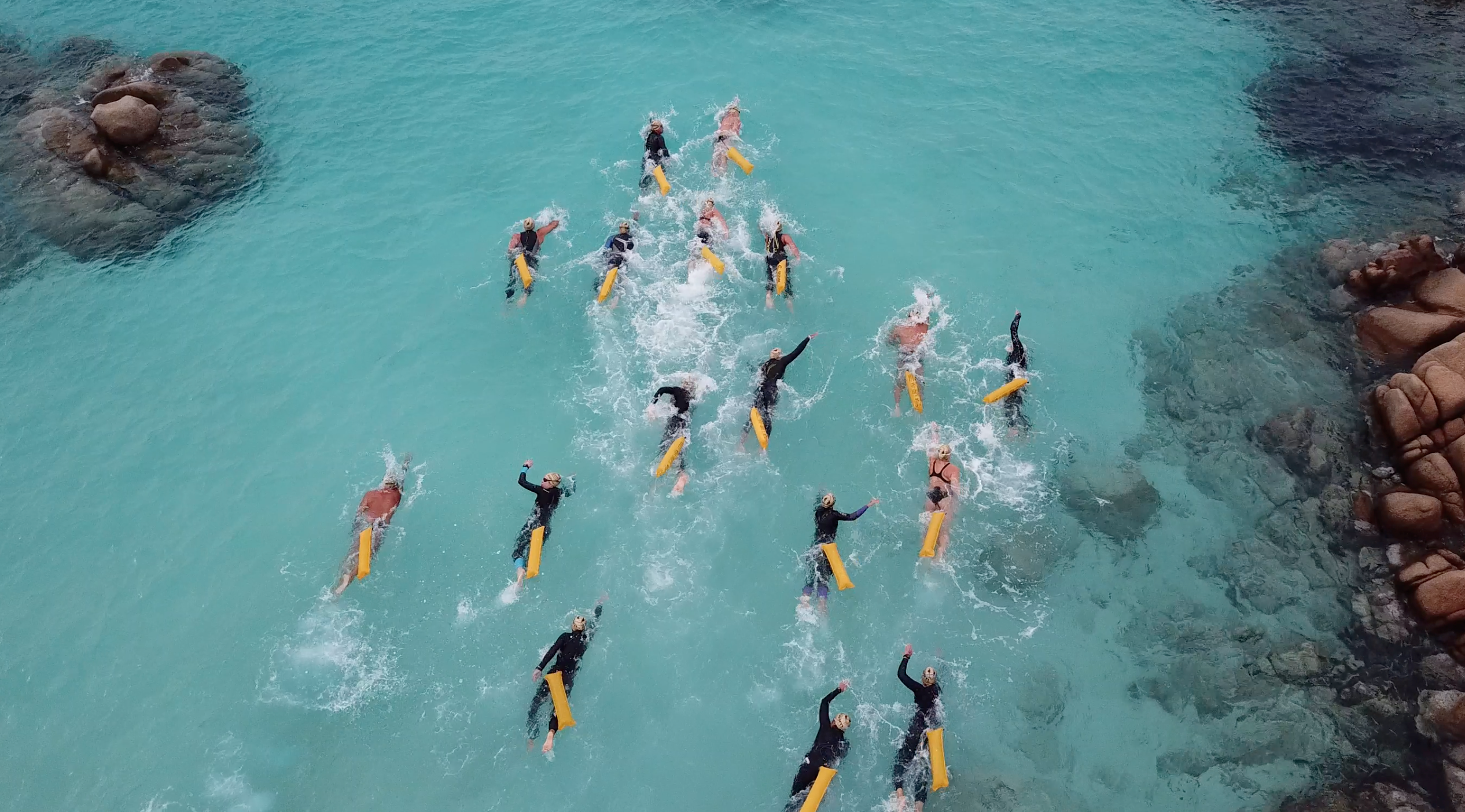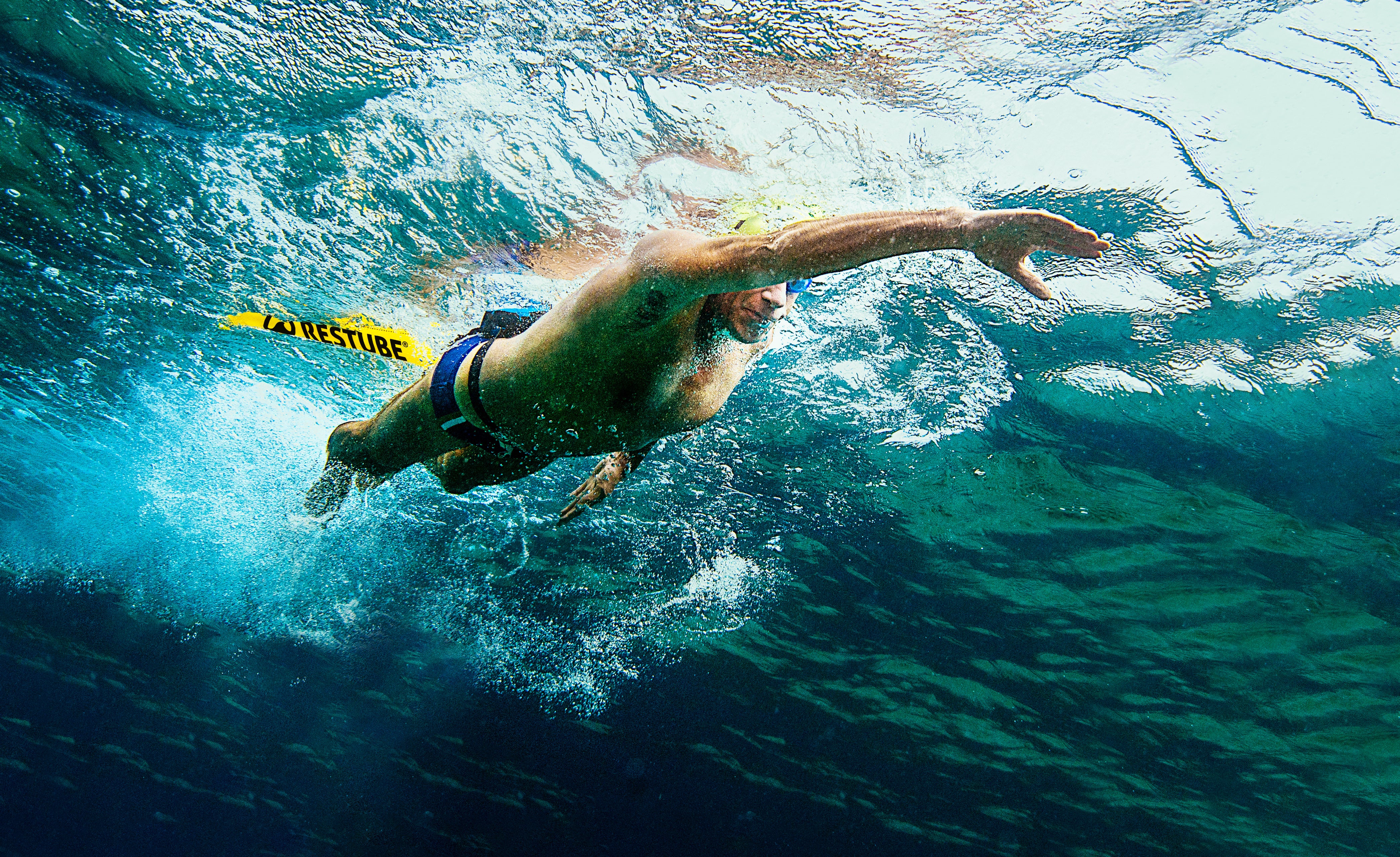
The new Swimming Safety Tips 2024
Unified and easy to understand: New Swimming Safety Tips in Germany

by Johanna | Restube
published on january 19, 2024
We spoke to Katy Völker, Deputy Head of the German Red Cross Water Rescue, about the new Swimming Safety Tips, how they came about and what they mean.
Read the interviewSwimming Safety Tips have always served as a guide for bathers to promote responsible behavior in and around water. Whether you are in a swimming pool, lake or other body of water, being aware of the Swimming Safety Tips will help to ensure your own safety and that of other bathers.
From January 1st, 2024 10 unified Swimming Safety Tips will apply in Germany. This has been agreed by the associations that have joined forces in the BFS (Bundesverband zur Förderung der Schwimmausbildung), among others including the German Red Cross Water Rescue Service, the DLRG and the German Swimming Association.
Previously, the individual organisations often had their own safety tips; the common tips are now intended to provide more clarity.

The 10 Swimming Safety Tips are written in particularly simple language and are short and to the point. This means that even pre-school children can understand the rules and actively incorporate them into their behaviour. A language institute helped to ensure that the Swimming Safety Tips are easy for children to understand.
Swimming Safety Tips should be understood by children, not just memorised. To make learning easier and more fun, the new rules are also available with child-friendly illustrations.
swimming safety tips for kidsThe 10 Swimming Safety Tips provide clear guidelines to increase your own safety and that of others in and around the water. This includes following rules of conduct, avoiding risky behaviour and treating others with respect. A key aspect of the Swimming Safety Tips is to be aware of your own abilities and limitations. This applies not only to swimming ability, but also to physical fitness and general health.
The new, unified Swimming Safety Tips in Germany, which are valid from January 1st, 2024
If you find yourself in a difficult situation in the water, additional buoyancy, such as that provided by the Restube, can be vital. By leaning over the buoy, your head remains relaxed above the water. The Restube buoy can also be used to attract attention by waving. The yellow signal colour makes you easy to see. If you want to help someone else, you can pass the buoy on without putting yourself in danger.
Swimming Safety Tips in many languages
Swimming Safety Tips play an important role in preventing accidents and emergencies in and around the water. That is why it is so important that everyone understands them. The new tips have been translated by the Water Rescue organization into many different languages, from Albanian to Hungarian. This ensures that language barriers can be overcome, and that people can find the Swimming Safety Tips in their own language wherever possible, so that they can behave safely in and around the water.

Everyone who spends time in and around water should be familiar with the 10 Swimming Safety Tips. Anyone wishing to obtain a swimming certificate in Germany must learn the tips and demonstrate their knowledge by taking the test.
Katy Völker, Deputy Head of the German Red Cross Water Rescue Service, answers our questions about the new Swimming Safety Tips.
RESTUBE: Why are the Swimming Safety Tips so important? How do they help to ensure and improve the safety of bathers and swimmers in German waters?
Katy Völker: Swimming Safety Tips promote safe behavior in and around water. Not only do they help prevent accidents, but they also help us show consideration and respect for each other. But we should do this regardless of the rules. I like to compare them to the rules of the road: if they are followed, they ensure safety and less stress. In the same way, Swimming Safety Tips ensure that everyone can have fun in and around the water.
Because we are in water, in an environment that is by nature unfamiliar to humans, we need to follow the Swimming Safety Tips. They are also important for safe swimming because our bodies react differently in water than on land. For example, in summer, suddenly entering much colder water can cause cold shock and gasping for air as water enters the airways. You should therefore cool down before entering the water. Exhaustion is also more of a problem in the water if you have swum further out than on land. That's why the Swimming Safety Tips say that I should only go swimming if someone can help me and that I should tell them beforehand.
We have also explained each Swimming Safety Tips in detail, as the short rules can also cover several aspects. The explanations are freely available here.
RESTUBE: What is new about the Swimming Safety Tips and what has led to these changes?
Katy Völker: The Swimming Safety Tips are published by the Federal Association for the Promotion of Swimming Education (BFS). Together with the other associations ASB, BDS, DLRG, DSV and VDST, we are committed to standardized, high-quality swimming training and the promotion of swimming skills in the population.
Until now, there have been different versions of Swimming Safety Tips in the associations, both in terms of content and number. It was important to standardize the Swimming Safety Tips and agree on the essential content so that they are better remembered and known by the public. We looked at all the versions and prioritized the content based on the number of accidents. We then used a language institute to help us find the right approach and simplify the rules to make them accessible to everyone and overcome language barriers. We then tested the Swimming Safety Tips in nurseries and asked our main target group, the children, whether they understood the rules and what we could do better.
We agreed on 10 common tips for the swimming safety, which are also part of the Seahorse and German swimming certificates. Some of the older rules, such as how to deal with boat traffic, have been dropped. However, the omitted rules are not wrong. They can be added to depending on the body of water.
RESTUBE: Is there a Swimming Safety Tip that is particularly important and should be highlighted? What are the key points and recommendations of the new Swimming Safety Tips?
Katy Völker: We have put the most important Swimming Safety Tips at the beginning in order of importance. In my opinion, the first 4 tips are the most important and in most cases help to ensure safety in and around the water. The first tip starts with you: Do I feel good when I go swimming? "Feeling good" means I am healthy, I feel comfortable in the water, I am not cold and I am not afraid. If you feel unsafe, uncomfortable or ill, you should not go swimming. And just because others go into the water doesn't mean I have to if I don't feel well. This could include concerns about your swimming ability, for example, can I swim safely or do I need close supervision? Am I comfortable with the depth of the water or the lack of visibility in the water?
We have placed special emphasis on supervision in the following rules. Direct supervision of non-swimmers and young children is very important and should be within immediate reach. Distractions such as the use of mobile phones (or distracting conversations) are absolutely taboo. These are lessons learned from the accident.
RESTUBE: How does the German Red Cross promote safe swimming in general?
Katy Völker: In addition to the Swimming Safety Tips, we are involved in committees and public relations work to ensure that everyone learns to swim as early as possible. That's why we offer water safety courses and swimming lessons. In addition, as part of the Bäderallianz (Swimming Pool Alliance), we are committed to preserving Germany's swimming pools and are working with other associations to find sustainable solutions to the complex challenges involved. We also support parents and guardians, educators and teachers with information and target group-specific offers. These are summarized on our website.
RESTUBE: Are you planning any special training or education to inform the public about the new tips?
Katy Völker: The Swimming Safety Tips are increasingly being presented by the other federations and by us as part of our public relations work. We have prepared them graphically in two versions to appeal to different target groups, translated them into many languages, provided coloring pictures and are preparing other playful communication offers, especially for children. As they are also part of the Seahorse and German swimming certificates, they will be standardized across the federations from this year. We are already receiving support from many pool operators who are displaying the new Swimming Safety Tips in their pools.
We are delighted that the Swimming Safety Tips have already received so much attention and we look forward to seeing them spread further.
RESTUBE: Dear Katy, thank you very much for the interesting information and exciting answers!
The Drowning Chain of Survival (DCOS) - an international guide
An international team of scientists and lifeguards have also focused on water safety and accident prevention and created the Drowning Chain of Survival. The 5-step plan is a "life-saving chain of action in the event of drowning" - a guide to understanding how to prevent drowning and what to do in the event of a drowning incident. More information can be found here, including an interview with Jonathon Webber, a member of the New Zealand Resuscitation Council who played a key role in the development of the DCOS.






Leave a comment